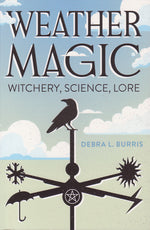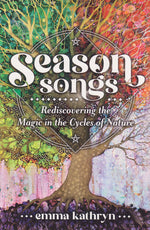Park It!
Fran CareyShare
© Copyright 2024 Fran Carey, All Rights Reserved.
For the last couple of centuries, we humans have been very busy distancing ourselves from nature. We have invented our way into hugemongous cities in which we work in climate controlled boxes and live in spaces much the same. Beige Berber carpet, anyone? Few of us can tell you where our water comes from beyond the faucet in the kitchen. We can’t grow our own food, we have never seen our grandmothers wring the neck of a chicken, and we think we’ll melt if we get caught in the rain. Rise up, my fellow primates! This is no way to live. And living this way is making us sick. Literally. Physically, mentally, and emotionally. And certainly spiritually. We have a duty to ourselves, our families, and the planet to rediscover our connection to Nature, and to honor that connection as our forebears did in the days before we decided we had an imperative to conquer the land and everything in, on, and under it. Nature Spirituality is a method to fulfill that duty, to honor our connection to Mother Earth and her denizens.
“But”, you say, “I live in the city. There’s no nature here.” Yes, yes there is. It’s maybe a bit manicured and unnatural, but few of us live where there truly is no nature.
As of this writing, the National Park System includes 429 areas covering more than 84 million acres in the United States and US territories. Every state has at least one national park, monument, historical site, or something administered under the auspices of that system, and many of these units feature nature. Not all offer picnic spaces or camping, but a quick web search will help you find the campsite closest to you. If you do have an accessible national park, take a day trip. There is an admission fee, but there are also fee free days, and, depending on your age and veteran status, options available.
Then there are the state parks. According to America’s State Parks, a website for park managers, our nation has 9,817 parks. Even tiny Rhode Island has 15 state parks. Colorado has, at the moment, 42. That number changes relatively often. Like national parks, not all have campsites, and not all are open year round. There are fees, but, again, there are free days and passes to check out at the local library for many of them.
Many state and national parks offer programs to introduce you to the plants, animals, and geology of the parks. These may be free or low cost, and at any time of day or night. Organizations such as the Audubon Society have Christmas Bird Counts and other programs in state and national parks, and need volunteers. Access Fund, local mountain, hiking, or biking clubs have trail maintenance days. This is another way to get outside.
Not all cities have met Westminster, Colorado’s mark of having 30% of the land in their city as Green Space, but most have something, from New York’s massive Central Park to scrap land pocket parks, where green growing things live. You may have to ride a bus or walk a bit, but there is nature tucked somewhere in most cities.
There is also a lot of nature out there that is untamed. National and state parks are very good sources for that. The Ramble in Central Park in Manhattan is ungroomed, a little bit of natural wildness in the untamed city. Some states have large areas of timber that belong to lumber companies, but on which the company allows hiking, hunting, and other recreation. Ask. The worst they can say is no. Do ask first. Trespassing is illegal in all 50 states. Know the boundaries. The internet or local sporting goods stores can help with that. Maps are still a thing.
The National Park Service is not the only nationwide steward of wild spaces. The Department of Agriculture is also in that business. They oversee the National Grasslands and the Bureau of Land Management, as well as the National Forests. All of those bureaucracies have areas in which they permit hiking and camping, as well as hunting, fishing, and rock climbing, among other recreational activities. Again, know your boundaries, and any current warnings or closures.
As more and more people find the need to challenge themselves athletically and do so outdoors, National Scenic Trails are proliferating. The Great Allegheny Passage goes from Philadelphia to the CNO Towpath in Washington, DC. Sheryl Strayed took us along on her hike of the Pacific Crest Trail. There is a long distance trail in every region. And you don’t have to hike the whole thing. It’s perfectly all right to do a mile or so out and back from a trailhead. And it gets you out in nature.
Practice
Saturday (or Tuesday) In the Park
Turn on the “location” feature on your phone or computer. Search “closest park to me”. Fill a water bottle, put on some sunscreen and appropriate clothing, and go there. Take a notebook, a pen, and a snack. Find a place to sit. Look around.
Draw a stick-figure map of your park. Where are the entrances? Are they defined, or can you just walk in wherever? Draw yourself on your bench or piece of ground in its proper geographic location. Or thereabouts. This is about awareness, not artistic ability.
What is the name of the park? (When I did the computer search, one of the parks came up as “Park”. That’s all. Just Park. I know that park. That about covers it.) Look for a sign board to explain the name. Or research it when you get back to a computer. No using the phone while you’re in the park. This is about awareness of what’s around you.
Use all your senses. Write down ten things you see. It could be grass, ducks, dragonflies, trash (put it in its place), whatever.
Now describe the smells. Flowers, cut grass, dog poo, Waste Management?
The sounds. Birds, a lawn mower, kids playing, a major highway?
Taste. What snack did you bring? How does your water taste? Is it time to change the filter? Can you taste the air?
What do you feel? Note the air temperature and humidity, the way the ground feels under your feet. Pay attention to the surface on which you are sitting. Is it a wooden bench that could really use some repair? Cold concrete? Tickly grass?
Look at the architecture of the park. Write about the landscaping, the pathways if there are any, the trees and flowers and grass, or lack thereof. “Park” is mostly concrete, more of an off-road way to get under two major streets than someplace the city planners thought we’d recreate, although there is water. Nominally Little Dry Creek. In a concrete trough the city built for it. There are ducks, though. (It's actually a flood control structure.)
Finally, if you feel safe, close your eyes and let your spirit sense the space. Listen, both with your ears and your soul. Consider all the beings around you, human, animal, plant, stone, water, everyone. Allow yourself to connect to the energy of the land itself. Not all places have a defined, individuated spirit, but all have Spirit. Be still and find that Spirit. Make the connection.
Keep your sessions short to start. Practice your mindfulness for 30 minutes, then just chill. Focus, like push ups, has to be practiced. The time you can maintain focus will extend as you practice. When you feel ready, pack up and head home. Write down your experiences either before you leave or when you first get home, while they are fresh in your mind. Repeat as often as possible.
Humans are animals. We need our connection to Nature and the spirits of Nature. Let your local, state, and national government help you rather than hurt you in this situation. Use those parks. Your tax dollars are paying for them.
| Recommended Products | |
 Modern Meditations Modern Meditations |
 Alive with Spirits Alive with Spirits |
 Weather Magic Weather Magic |
 Season Songs Season Songs |
